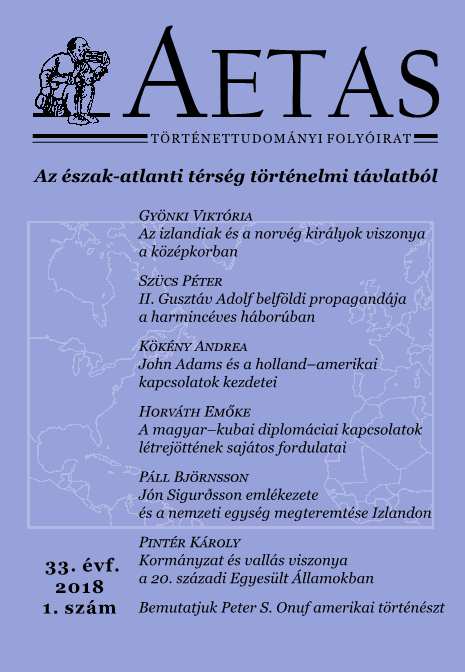II. Gusztáv Adolf belföldi propagandája a harmincéves háborúban
The Domestic Propaganda of Gustavus II during the Thirty Years’ War
Author(s): Péter SzűcsSubject(s): 17th Century
Published by: AETAS Könyv- és Lapkiadó Egyesület
Summary/Abstract: Situated on the northern periphery of the European continent, with extensive territory but sparse population, Sweden had played a minor role only in the history of Europe before entering the Thirty Years’ War, yet soon rising into the ranks of the most significant great powers of the seventeenth century. The foreign policy of expansion, at the same time, took a high social toll: in addition to high taxes, a substantial part of the population of the country was kept in arms permanently, never to return to their homeland. In its effort to prevent rebellions, the Swedish state launched a conscious and extensive propaganda campaign targeted at all segments of the population. In this essay I discuss a period of Swedish participation in the war, brief as it were, yet resulting in significant Protestant victories, concentrating on the Swedish war propaganda implemented during the German campaign of Swedish ruler Gustavus II (1611-1632) as well as the one preparing it. I do this on the basis of documents pertaining to parliamentary sessions, day of prayer posters (böndagsplakat) issued every year, read out and posted in every congregation as well as sources related to days of thanksgiving (tacksägelsedag) ordered after military victories. I first give an overview of the Swedish state, then, having covered the major generic and content-related characteristics of the sources I perform a content analysis of the message conveyed. The Lutheran Church of Sweden played a major role in disseminating war propaganda: the message that the central power wished to mediate on the days of prayer prescribed for every parish several times a year or on days of thanksgiving was coated with the dogmas of Lutheran orthodoxy; it thus could appear as part of the everyday religious practice, in an easily comprehensible way, for the widest target audience of the peasantry.
Journal: AETAS - Történettudományi folyóirat
- Issue Year: 2018
- Issue No: 1
- Page Range: 16-37
- Page Count: 22
- Language: Hungarian

